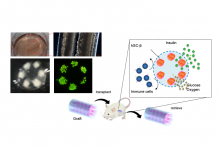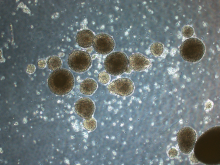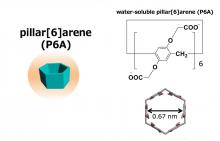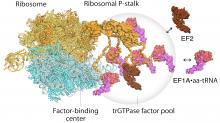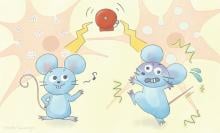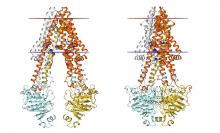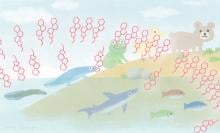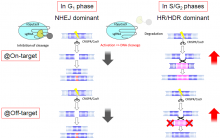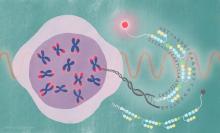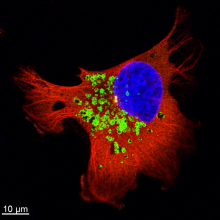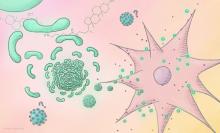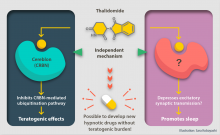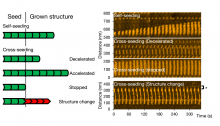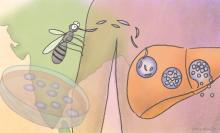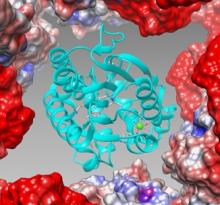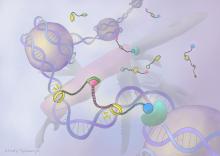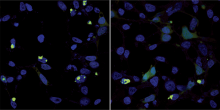Biology Biochemistry
News
22 Apr 2021
Scientists have shown that the biological molecule PD-L1 is a potential target for the treatment of metastasized oral malignant melanoma in dogs.
15 Apr 2021
Researchers from The University of Tokyo develop a novel device for the safe and effective transplantation of human induced pluripotent stem cell (iPSC)-derived pancreatic beta-cells in type I diabetes mellitus
29 Mar 2021
A hydrogel, a type of soft matter, developed at Hokkaido University successfully reverted cancer cells back to cancer stem cells within 24 hours, in six different human cancer types. This could lead to the development of anti-cancer stem cell drugs and personalized medicines.
11 Jan 2021
Researchers at Kanazawa University report in Communications Chemistry that a molecule known as pillar[6]arene can form a host–guest compound with a cancer-associated metabolite. The phenomenon can be used to efficiently detect the metabolite in crude biological samples, which is important for preventing and treating metabolic syndrome and associated pathologies.
07 Jan 2021
Factor-pooling by ribosomes caught on video using state-of-art high-speed atomic force microscopy technology.
28 Dec 2020
Investigations of a cellular protein have uncovered a possible link with schizophrenia.
28 Dec 2020
iCeMS scientists have revealed how a transporter protein twists and squeezes compounds out of cells, including chemotherapy drugs from some cancer cells.
24 Dec 2020
Researchers at WPI-IIIS find that normal sleep in mice depends on bacteria that help make neurotransmitters such as serotonin in the gut. The article, “Gut microbiota depletion by chronic antibiotic treatment alters the sleep/wake architecture and sleep EEG power spectra in mice,” was published in Scientific Reports.
23 Dec 2020
A transporter protein that regulates cell membrane cholesterol likely played an important role in vertebrate evolution, according to a review published by iCeMS researchers in the journal FEBS Letters.
04 Dec 2020
Turning off gene-editing until it reaches cell cycle phases where more accurate repairs are likely to happen offers a promising fix to CRISPR-Cas9’s problem with unwanted genetic changes.
19 Nov 2020
A repetitive DNA sequence that causes health risks when it malfunctions can now be watched inside living cells using a synthetic tool
04 Nov 2020
Residents of Kabwe Town, Zambia, have very high blood levels of lead and cadmium, to such an extent that the symptoms of toxicity have been clinically observed.
29 Oct 2020
Scientists have revealed the molecular mechanism regulating the trafficking of lysosomes that increases the invasiveness of radioresistant cancer cells following radiotherapy.
01 Oct 2020
Scientists have found an ingredient that makes a vaccine more effective through an approach more often seen in materials science – testing molecules that self-assemble into larger structures.
28 Sep 2020
Researchers from the University of Tsukuba demonstrate that the hypnotic and teratogenic effects of thalidomide are separable.
Thalidomide is a medication with several different effects, one of which is promoting sleep in the context of insomnia. In a new study, researchers from the University of Tsukuba have discovered that thalidomide exerts its hypnotic effects through mechanisms distinct from those for the drug’s notorious teratogenicity.
These are striking results showing how thalidomide induces sleep independently of its known effects on the teratogenic cereblon pathway. These findings could be helpful in developing novel thalidomide-like hypnotic drugs without thalidomide’s teratogenic effects.
The study was published in the scientific journal Proceedings of the National Academy of Sciences of the United States of America.
07 Aug 2020
Scientists have unveiled a correlation between high blood lead levels in children and methylation of genes involved in haem synthesis and carcinogenesis, indicating a previously unknown mechanism for lead poisoning.
03 Aug 2020
Researchers at Kanazawa University report in ACS Nano a high-speed atomic-force microscopy study of the formation of protein fibrils (amyloids) associated with pathologies in collaborated research with Showa University. Mixing different variants of a single protein and changing the acidity of its environment is shown to result in significant variations in amyloid structure and elongation rates.
02 Jul 2020
A method that involves infecting liver cells with mosquito-bred parasites could improve the study of malaria in India.
29 Jun 2020
A research team from the School of Life Sciences at The Chinese University of Hong Kong (CUHK) has developed a novel method for extracting enzymes from bacteria, which lowers the production cost yet improves the enzyme’s stability. It also opens up a new avenue for the enzymatic production of biodiesel, an eco-friendly and effective substitute for fossil fuels. The research findings were recently published in the Journal of the American Chemical Society.

27 Apr 2020
Application period now open for award programme that acknowledges and celebrates outstanding women working in STEM* research and outreach
28 Feb 2020
A new compound with the potential to turn genes on and off could lead to new cancer and hereditary disease treatment strategies.
09 Jan 2020
A small molecule could hold the key to tackling the protein build-up in nerve cells that occurs in several devastating neurological disorders.
09 Dec 2019
A chemical cage suppresses the activity of a biological clock regulator in the dark and releases it with light, showing potential for future treatments of circadian-clock-related diseases.
- « first
- ‹ previous
- 1
- 2
- 3
Events
Sorry, nothing coming up for this discipline
Researchers
Sorry, nothing coming up for this discipline
Giants in history
Sorry, nothing coming up for this discipline




